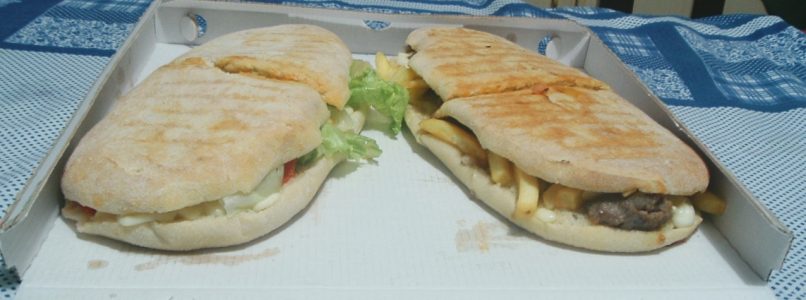Panuozzo di Gragnano is a typical Campania sandwich, characterized by the pizza dough, a rich filling and a surprising length of 30 centimeters
When you think of the Campania and to his gastronomic specialties the thought goes immediately to the Neapolitan pizza, the undisputed queen of the Neapolitan dishes. Among the many worthy heirs of classic pizza, made with the same dough but characterized by different shapes and condiments, there is one really special, namely the panuozzo of Gragnano. This sort of pizza-sandwich, similar to saltimbocca but with much larger dimensions, panuozzo is a typical product of the municipality of Gragnano (Naples) where it was invented in the early 80's in the historic Pizzeria Mascolo.
The story of the legendary "panino-pizza" of Gragnano
Although the recipe for this very long, soft and delicious sandwich has been imitated and replicated in many pizzerias in Campania and even in other areas of Italy, the real panuozzo, as we have seen, is that of Mascolo Pizzeria. Its invention dates back to 1982, the year in which the pizza maker Giuseppe Mascolo had the intuition to give life to this original alternative to pizza. Then, shortly thereafter, improved and patented. The pizza dough is modeled into a sandwich shape with a length of about 25-30 centimeters, baked for half an hour, then filled with an abundant filling and baked again for a few minutes. The result is a sandwich fromsoft and light dough with a rich filling, racy and irresistible. Once ready, the panuozzo is served at the tables, possibly cut into two or four parts on request, or ordered for take away, in a street food version. What makes the sandwich special, however, are not only the format and the preparation process, but also and above all the ingredients used, all local and of the highest quality.
Only fresh, local and genuine products for the authentic panuozzo
It must first be said that the flavors available at the Mascolo Pizzeria are many and all customizable. Among the most loved are that "Historic" with bacon and mozzarella, but also the classic one with ham and mozzarella, the timeless one with sausage and broccoli and the "Tommaso", one of the most popular, filled with mozzarella, bacon, champignon mushrooms and spicy sauce.
Almost all the products used are PDO and PGI excellence of the Lattari Mountains, and in particular cold cuts, dairy products and vegetables. Among the other typical and quality ingredients used we also find the flour for the dough and the well-known water from the local aquifer, also used for the production of the PGI Gragnano pasta.
In short, if you want to try a tasty and cheap alternative to pizza, which also has the advantage of being a regional recipe of excellent quality, the panuozzo of this legendary family-run pizzeria could really be for you.
Photo: Panuozzo di Gragnano Wikipedia.

